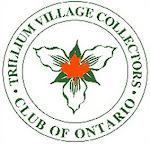This article first appeared in the previous edition of the club’s web page before this blog site was used. Hopefully, you will find it interesting still.

The Christmas season is celebrated by all the major religions as a time of gift-giving, feasting and enjoying the company of friends and family. The festivities of the Jewish Hanukkah, Muslim Ramadan, Hindu Diwali, and Black culture’s Kwanzaa all take place and overlap at this time. It is the season to give thanks for the bounties of the closing year and to look forward to the New Year.
The roots of traditional Christmas customs stretch back far earlier than the birth of Christ. From the ancient Near East to northern Europe, the end of December was a perfect time for celebration as the harvest was in and the wine made during the year was ready for drinking. In the Roman Empire, a holiday in honour of Saturn, the god of agriculture, began in the week leading up to the winter solstice, which in Rome was considered to occur on December 25. Food, drink, and merriment were plentiful and the Roman Social classes mixed together to party. Christians decided that March 25, thought to be the spring equinox, was the date that the Archangel Gabriel told Mary that she was to bear the son of God, and so, if Jesus was conceived then, nine months later, he would be born on December 25. The birth of Christ became linked with the pagan rituals and festivities of the season.
In the Middle Ages, believers would attend church and then celebrate in a “Mardi Gras” like atmosphere.
The medieval world added touches of its own, from carols to manger scenes, and the blessing of the animals at midnight mass. Modern Christmas evolved somewhat from popular culture. Charles Dickens’s classic 1843 tale, “A Christmas Carol” portrayed those who did not celebrate the holiday as mean and miserly. Clement Moore’s 1822 poem, “The Night Before Christmas” transformed the legend of St. Nicholas, who brought gifts to all good children on December 6, into the entirely fictional Santa Claus, who did the same on Christmas Eve. By 1931, the Coca-Cola artist Haddon Sundbloom had characterized Santa as a fat and jolly figure with a flowing white beard and locks and dressed in a red suit.
Christmas became the perfect family holiday and borrowed rituals from many immigrant customs. Queen Victoria’s German consort, Prince Albert, introduced the idea of an evergreen tree and foliage being brought into the home and decorated. The Christmas tree, wreaths, and holly have become an essential part of the festivities. Greeting cards, coloured lights, holiday drinks and treats as well as gift-giving, especially for children, also caught on.
The connection between the family and the Christmas holiday is reinforced by everything from sermons to classic Christmas movies. It is also fitting for a holiday that takes its spiritual and emotional power from the birth of a child. For Christians, of course, that child was Jesus. But one does not have to be a devout Christian to see hope and renewal in a newborn baby or to enjoy being with friends and family. Whatever one’s faith or religion, he or she can always incorporate holiday traditions that mean the most!
Christmas Tradition
Fish is an ancient Greek symbol of Christ and Christianity. From the beginning, Jesus called his disciples to be “fishers of men”, and the early Christian church used the sign of the fish to mark its meeting places. Today, in many European homes, it is traditional to eat various kinds of fish as the Christmas Eve meal.For centuries, roast goose was always the preferred traditional meal at Christmas time. Poems and ballads have been written in praise of the roasting goose turning on the spit in the hearth of home and cottage. However, in the New World, turkeys became the bird of choice, simply because they were abundant in the forests, easy to catch and less “gamey” for modern tastes.


No comments:
Post a Comment